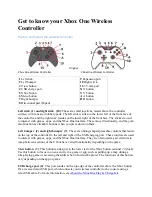
3 Function Construction
3.2 Labels
30
FXCPU Structured Programming Manual
(Application Functions)
Constant description method
The table below the description method required to set a constant to a label.
Data type
The label data type is basic or universal.
• The table below shows a list of basic data types.
Constant type
Description method
Example
Bit
Input "TRUE" or "FALSE". Or input "0" or "1".
TRUE, FALSE
Binary number
Add "2#" before a binary number.
2#0010, 2#01101010
Octal number
Add "8#" before an octal number.
8#0, 8#337
Decimal number
Input a decimal number directly. Or add "K" before a decimal
number.
123, K123
Hexadecimal number
Add "16#" or "H" before a hexadecimal number.
16#FF, HFF
Real number
Input a real number directly. Or add "E" before a real number.
2.34, E2.34
Character string
Surround a character string with single quotations (') or double
quotations (").
'ABC', "ABC"
Data type
Description
Value range
Bit length
Bit
Boolean data
0(FALSE), 1(TRUE)
1 bit
Word [signed]
Integer
-32768 to 32767
16 bits
Double Word [signed]
Double precision integer
-2147483648 to
2147483647
32 bits
Word [unsigned]/Bit String
[16-bit]
16-bit data
0 to 65535
16 bits
Double Word [unsigned]/Bit
String [32-bit]
32-bit data
0 to 4294967295
32 bits
FLOAT (Single Precision)
Real number
E
±
1.175495
-38
to
E
±
3.402823
+38
(Number of significant figures: 6)
32 bits
String
Character string
(50 characters maximum)
Variable
Time
Time value
T#-24d-0h31m23s648.00ms to
T#24d20h31m23s647.00ms
32 bits
Содержание 09R927
Страница 2: ......
Страница 234: ...232 FXCPU Structured Programming Manual Application Functions Revision History MEMO ...
















































